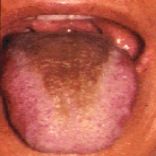β-Carotene
 |
| James Barker | freedigitalphotos.net |
What It Is: An Introduction
“[Beta-carotene is a strongly-colored red-orange pigment abundant in many different
fruits and vegetables. Particularly rich sources include orange root vegetables
such as carrots and yams; green leafy vegetables such as spinach, kale, and sweet
potato leaves; as well as yellow and orange fruits such as cantaloupe, mangoes
and papayas. ]”1
What It Does: A Few of Beta-Carotene’s Talents
“[Beta-carotene
changes] into vitamin A in the body, which [in turn] helps regulate the growth
of cells and [controls] immune system reactions. It makes sense that cells in the
digestive tract are affected most by vitamin A,”2 since “carotenoid absorption is restricted to the duodenum of the small
intestine. Within the intestinal wall, beta-carotene is partially converted
into vitamin A by an enzyme. This mechanism is regulated by the [individual
person's] vitamin A status: If the body has enough vitamin A, the conversion of
beta-carotene decreases.”1
It has been
indicated that “[beta-carotene’s potency as an antioxidant [also supports] lung
health, brain function, brain cell survival, and communication between the
brain cells, and well as protecting against several types of cancer,
Alzheimer’s, and heart attacks.]”2 “Beta-carotene has also been used to reduce the risk of breast
cancer in women before menopause, as well as age-related macular degeneration
(AMD).”1
How To Get It: Fresh and Natural Is Best
 |
| worradmu | freedigitalphotos.net |
“It's always better to do it
naturally [rather] than with synthetic supplements.”2 The typical
nutritional supplement is in a static form, isolated from key substances that the body requires for successful absorption
and use of the nutrient. In order to use the ‘supplement,’ the body is forced
to leech those other substances from its own system, thereby
causing additional health problems. For example, “Chronic, high doses of synthetic beta-carotene supplements have
been associated with [an] increased rate of lung cancer among those who smoke.
Additionally, supplemental beta-carotene may increase the risk of prostate
cancer, intracerebral hemorrhage, and cardiovascular and total mortality in
people who smoke cigarettes or have a history of high-level exposure to
asbestos.”1 So let’s go natural, shall we?
The website of the U.S. Department of Agriculture provides a
useful list of foods, ranked by their beta-carotene content per serving: The following foods were found to have the
highest beta-carotene content: Carrot juice, pumpkin, sweet potato, spinach,
collards.3
How to Use It: Going For Efficiency
 |
| dusky | freedigitalphotos.net |
“The average daily intake
of beta-carotene is in the range of 2–7 mg, as estimated from a pooled
analysis of 500,000 women living in the USA, Canada and some European countries.
“Absorption efficiency is estimated to be between 9–22%. The
absorption and conversion may depend on the form that the beta-carotene is in
(e.g., cooked vs. raw vegetables, or in a supplement), the intake of fats and
oils at the same time, and the current stores of vitamin A and beta-carotene in
the body. Absorption of beta-carotene is enhanced if eaten with fats, as
carotenes are fat soluble.”1
“[To maximize the beta-carotene in every meal, just add a little
bit of fat to the orange, yellow, and leafy greens you usually eat every day,
and you will get all the beta-carotene you need without really changing your
diet. But be smart about what fat you use: Coconut oil, olive oil, balsamic
vinegar, avocado and hummus are very good options. If you sauté your vegetables,
use a bit of coconut oil or extra virgin olive oil. For salads, use some
coconut or olive oil and some balsamic vinegar as your dressing, with a bit of
fresh squeezed lemon. To take a walk on the wild side, use some hummus as your
dressing. Also, lightly cooking, chopping, and grating carrots and other vegetables
containing beta-carotene help to make for easier release and absorption of
beta-carotene.]”2
The Point: Why We Bring it Up
Beta-carotene is a vital nutrient for a healthy digestive tract,
eyes, lungs, brain and immune system. But it is also difficult to absorb—so, by using
these simple steps mentioned above, you will absorb more beta-carotene and
enjoy better health.
2. Goldstein,
Hesh. “The
Importance of Beta Carotene.” Naturalnews.com. 13 Nov. 2012. Web. 6 Feb. 2013. http://www.naturalnews.com/037933_beta_carotene_carotenoids_foods.html.
3. USDA. “USDA National Nutrient
Database for Standard Reference, Release 21.” Usda.gov. Web. 6 Feb. 2013. http://www.nal.usda.gov/fnic/foodcomp/Data/SR21/nutrlist/
sr21w321.pdf.





